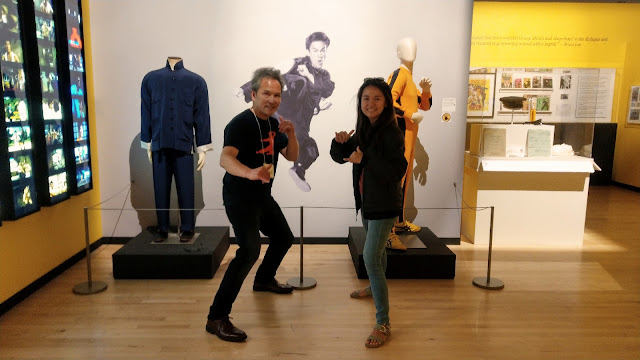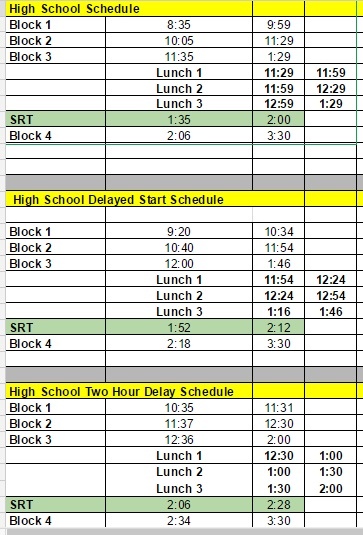San Francisco Chinatown -- Meeting the living legacy of Bruce Lee
(中文版,請點此)
It was an afternoon in San Francisco while I was waiting for my connecting flight to Indianapolis back from visiting my family in Taiwan. I decided to use those spare hours to explore the Chinese Historical Society of America Museum in Chinatown. As I was strolling through the “We Are Bruce Lee” exhibition, a gentleman approached me and started to tour me around. He introduced himself as Jeff, or Mr. Chinn, and it turned out that he is the collector of this exhibition. Mr. Chinn was there that day to pay tribute to Bruce Lee on the 49th anniversary of his passing. I didn't know that I showed up on a special day, and I for sure got a special personal tour around the exhibition. All the artifacts from the exhibit were the collections of Mr. Chinn. And from his sharing, I now have a deeper understanding about the legacy of Bruce Lee and the Asian American experience.
(On the left is Mr. Jeff Chinn, the collector of this exhibit "We Are Bruce Lee.")
During middle school, Mr. Chinn's family moved out of Chinatown and he transferred to a new school. Not only did he have to adjust to a new environment, but he also had to struggle being the only person with a Chinese appearance in the whole school.
Around the same time, Bruce Lee rose up to be a well known martial arts movie star and became Mr. Chinn's hope and support during those difficult times in his teenage life. For him and many other Asian Americans at that time, besides the excitement to see someone famous on TV that shared the same color of skin, there's something more that was inspiring.
Bruce Lee's success did not happen overnight. Hollywood during the 1960s and 70s did not treat Bruce Lee fairly. When playing the role "Kato," his salary was way lower than other actors, and he got paid the same amount as the other stuntmen who did not even have names in the movie "The Green Hornet," just because of his skin color.
However, these setbacks did not stop Bruce Lee from pursuing his dreams. He realized that to make Hollywood take him as seriously as he hoped for, he had to become a big star in Asia first. So Bruce Lee went back to Hong Kong for a few years and focused on making martial arts movies. Because of his talent, not surprisingly at all, his movies turned into some really big hits.
As Bruce Lee expected, he was invited by Hollywood to star in movies after he became famous in Asia, and this time, he received the respect that he deserved. He did not get to see his first and only Hollywood movie as a leading actor, unfortunately, because of his sudden death. But he for sure became a well-known name for so many decades until today.
(The pay scale from The Green Hornet shows that Bruce Lee got paid the least at that time.)
"I was born in the same hospital where Bruce Lee was born in Chinatown, San Francisco." Back to the Chinese Historical Society of America Museum, Mr. Chinn said proudly. What inspired teenage Mr. Chinn, I now understand, was not just sharing the same skin color with Bruce Lee, but also his perseverance and resilience that kept him going under the institutional discrimination in Hollywood at that time. It was this spirit that inspired teenage Mr. Chinn. He believed, if his role model could thrive under such harsh conditions, he could do anything as well.
(Mr. Chinn shared it was this poster of Bruce Lee in his room that supported him through some difficult times in his teenage life.)
During the tour, Mr. Chinn told me that, “representation matters.” In the past, I might have thought of Bruce Lee as just a famous kung fu movie star. But after the experience at this exhibit, Bruce Lee means so much more to me now.
I thought about how surprised I was when I started teaching in the U.S. and noticed that students with Asian heritage backgrounds were usually not as proud of their Asian roots as I am. I realized, growing up in Taiwan where I was "the majority," I did not have to go through some struggles that my Asian American students had to experience. Thanks to this exhibition and the sharing from Mr. Chinn, I feel like I can relate to my Asian American students a little better now.
I stared at a quote from Bruce Lee on the exhibition wall, "To hell with circumstances, I create opportunities." I felt the frustration under the line, but also felt inspired by how he took control of his own destiny and would not let anyone else label him or limit his ability. I marveled, and believed that his legacy will keep influencing many more generations to come.








留言
張貼留言